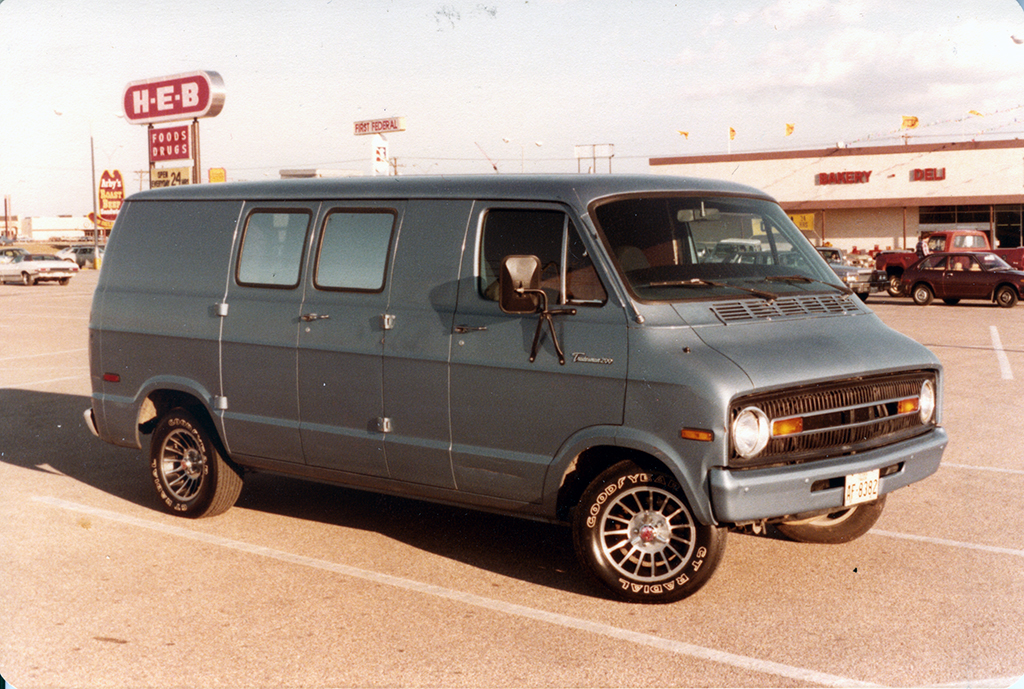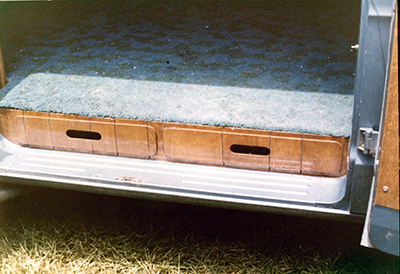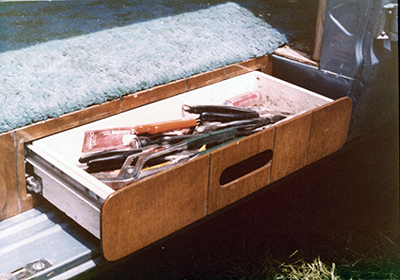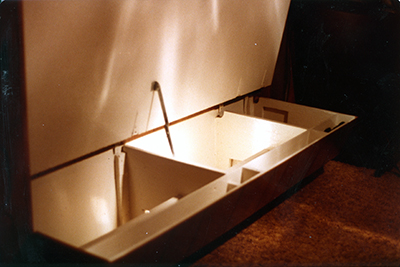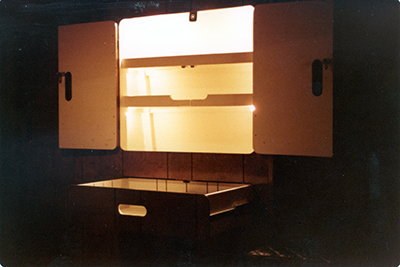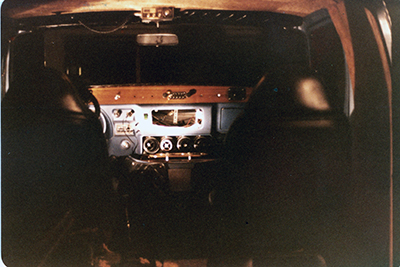I was saddened when I read this morning of the passing of automotive journalist Brock Yates. Car and Driver was my favorite magazine for a half-century and Brock Yates was a big part of that. Also, last week Autoweek had an video about the Dodge van cult in Japan—the Dajibans: https://autoweek.com/article/car-life/tag-along-insane-japanese-race-van?utm_source=DailyDrive20160928&utm_medium=enewsletter&utm_term=headline-center&utm_content=body&utm_campaign=awdailydrive
These two events got me thinking about my Dodge vans. Most of the club members probably think of me as a Honda guy or a Mazda guy. While this may be true, for longer than I have favored those vehicles, I have been a van guy. Vans have been my choice of work vehicle since 1973, and the opportunities for personalization and multi-use capabilities have long appealed to me.
Brock Yates wrote about his Dodge van, nicknamed Moon Trash II, which he used to make the original cross-country run, leading to the first Cannonball Run, in 1971. His descriptions of the van led to my purchase of my first van in 1973. I ordered a Dodge B200 cargo van with the 360 c.u. engine, 3-speed manual transmission and limited slip diff. It had the usual air conditioning, power brakes and steering and the empty utility interior. The 1970’s saw the boom of the “Good Times” van craze and I was a part of that. Showing great restraint, however, I never had shag carpeting in any of my vans.
From the beginning, the van had great appeal for me. As a carpenter, it was an excellent work vehicle, allowing me to carry tools and supplies dryly and securely. I set about customizing the interior. Unfortunately, my photos of the interior are not great and I only have a couple of photos of the exterior, just before I sold it.
I sheathed the interior walls with ¼” plywood, properly insulated behind, and then built wooden cabinets along the interior walls, with stained birch plywood sheathing. There was a bench along the driver’s side with lots of space for tools, and I had numerous other partitions and cubbyholes for storage. I used glove box switches and lights so most of these cabinets would be illuminated when opened, and the interiors of all compartments were painted white for visibility. There were storage compartments in the doors and I built two pull-out drawers in the side door foot well. The ceiling was ½” cork. Swivel “bucket” seats from a 1974 Monte Carlo were installed up front. All in all, the end result was very attractive, and clean looking. I added Hooker headers to the engine, giving a good boost in power. I bought a Hurst shift kit and changed the three-on-the-tree to a floor shift.
Being able to express myself with all this work, the van became as comfortable as a well broken in shoe. I continued modifying the van. I had the underside of the entire floor pan, including wheelwells, sprayed with urethane foam. I also had foam sprayed inside the doors and some of the interior panels. In addition to the insulative benefits, this also served to greatly quiet down the van. During this time I also installed what was then a near state-of-the-art sound system. I used SpeakerLab components including a crossover system with huge pots and coils. I installed eight inch woofers in the side walls, just behind the seats, making a sealed enclosure of about one cubic foot. Five inch midranges in sealed enclosures were installed in the front doors and mylar dome tweeters were installed in a new panel that ran across the upper dashboard. Two more eight inch drivers were installed in the rear doors. Mega-power car amplifiers were not yet available so I had something like 25-50 watts per channel. In the quieted interior the sound was great. I also had a CB radio, mounted overhead. The CB was very useful on trips, including a 6,000 mile road trip Chris and I took, sleeping in numerous national parks, driving to the top of Pikes Peak, on our way to visit friends in Seattle. Leaving Seattle we followed the coast highway down to Los Angeles.
Eventually, mileage caught up with the van; the engine was tired. This, combined with the second gas crisis in the 70’s led me to decide to downsize the engine. Since the venerable 225 cubic inch was the base engine for the van, I located one in a salvage yard and had it rebuilt. I installed a Clifford Research intake manifold with a Holley four-barrel carb and three-into-one headers with dual exhausts. I had the exhausts run together, exiting just behind the rear wheel on the driver’s side. The six had a beautiful sound, like an XKE. I had also installed a four-speed tranny and mounted Hurst floor shift linkage.
This setup provided the necessary power and gas mileage went from 13-14 mpg to 17-18 mpg. Using catalyzed enamel I painted the grill, bumpers, roof mirrors and the insides of the Vector wheels. Unfortunately, after getting it all fixed up, it turned out to be time to sell it and move on to the next project. I sold it in 1981. I have had three vans since and still have a (non-running) 1991 Dodge with much work inside and an even better sound system, but I still miss that first van.

